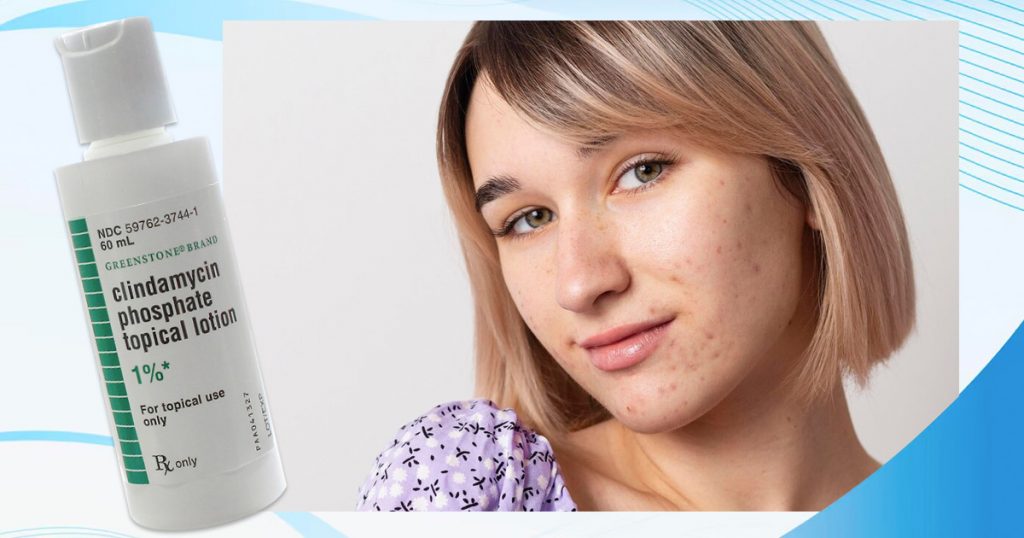If you’re dealing with stubborn breakouts, you’ve probably heard about using clindamycin for acne. It’s one of the go-to topical antibiotics that dermatologists prescribe when your skin won’t calm down.
Clindamycin helps fight the bacteria that trigger inflamed acne and reduces the redness and swelling that come with it. But to get real results, how you use it matters just as much as the medication itself.
One study published in the Journal of Dermatology and Treatment found that clindamycin combined with benzoyl peroxide reduced acne lesions by over 50% in just 12 weeks. That’s a big deal if you’re tired of cycling through random spot treatments.
What Is Clindamycin and What Does It Treat?
Clindamycin is a topical antibiotic that treats inflammatory acne, red, swollen pimples, pustules, or cysts. It works by killing acne-causing bacteria and calming the inflammation.
You’ll usually find it in gel, lotion, foam, or solution form. The most common version used for skin is clindamycin phosphate.
Clindamycin phosphate is good for acne, especially when paired with benzoyl peroxide or other topical treatments. It helps reduce bacteria and inflammation without being too harsh for most skin types.
Steps on How to Use Clindamycin for Acne
Applying clindamycin for acne requires more than just hoping for the best results. To get the most out of it, you need to follow a few simple but important steps.
Step 1: Start With a Clean Face
Before you apply anything, wash your face gently with a mild cleanser. Avoid harsh scrubs, exfoliants, or products with alcohol. Your skin barrier needs to be calm and intact for clindamycin to work properly.
Use lukewarm water, not hot. Pat your skin dry with a soft towel. Don’t rub.
Step 2: Apply to the Full Affected Area (Not Just Pimples)
A common mistake? Only applying it on visible pimples. Clindamycin works better when used over the entire breakout-prone area, like your T-zone, chin, or jawline.
Use a thin, even layer. You don’t need to glob it on. A little goes a long way.
This helps treat current breakouts and prevent new ones from forming. After all, Clindamycin for acne is both treatment and prevention.
Step 3: Give It Time to Absorb
Once you’ve applied it, wait at least 5 to 10 minutes before layering anything else. Don’t rush into applying serums, moisturizers, or sunscreen right away.
Clindamycin needs time to soak into your skin and do its job. Letting it sit undisturbed reduces the chances of irritation and boosts its effectiveness.
Step 4: Use It Once or Twice a Day (As Directed)
Most people start by using clindamycin once a day, usually in the evening. If your skin handles it well, your doctor might recommend using it twice a day.
Stick to the routine. Skipping days or overusing it won’t help. Results come from consistency, not how often you use it.
Clindamycin cannot help acne fast. You’ll likely see changes in 4 to 8 weeks, not overnight.
Step 5: Combine With the Right Products
Clindamycin works even better when paired with the right partners. The most common combo is clindamycin and benzoyl peroxide. Together, they kill bacteria and reduce the risk of antibiotic resistance.
You might also be prescribed a combo product like:
- Clindamycin + tretinoin (boosts cell turnover)
- Clindamycin + niacinamide (calms inflammation)
Stick with simple moisturizers and gentle sunscreen during the day. Avoid layering strong acids or exfoliants unless your dermatologist advises it.
Step 6: Avoid the Triggers That Cancel It Out
Using clindamycin the right way also means knowing what to avoid:
- Don’t use physical scrubs or grainy exfoliants.
- Avoid products with alcohol, witch hazel, or menthol.
- Limit sun exposure, and always wear SPF.
- Don’t mix too many active ingredients without guidance.
Also, avoid popping pimples. Clindamycin won’t help if you’re constantly damaging your skin barrier.
Step 7: Give It Time, Then Reassess
Don’t expect miracles in a week. Like most acne treatments, Clindamycin for acne takes time. Stick to your routine for at least 6 to 8 weeks before deciding if it works for you.
If things haven’t improved by then, or you’re dealing with side effects like burning, itching, or peeling, check in with your doctor. You might need to tweak your routine or switch to a different treatment.
More Than Just Clear Skin
Clindamycin for acne does more than clear your skin; it challenges you to slow down and work with your skin, not against it. With quick fixes everywhere, sticking to a thoughtful, consistent treatment plan is an act of patience most people overlook. But that patience often teaches you more than just how to treat acne; it shows you how your body reacts, how habits affect your skin, and how small daily choices build long-term results. Clearer skin might be the goal, but the process is what really shapes your routine and your confidence.
